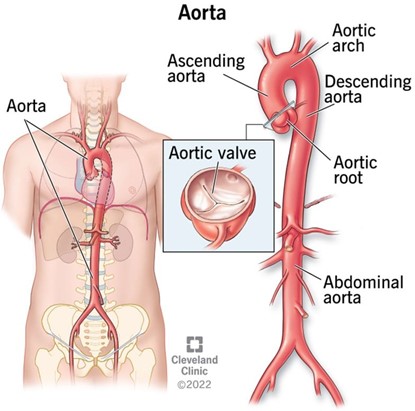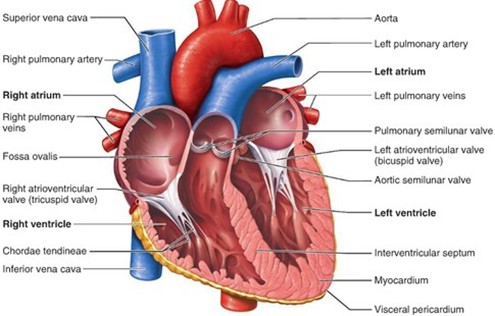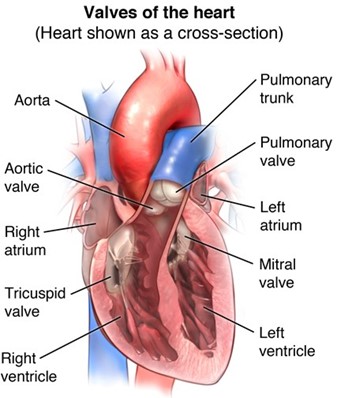The largest artery in the body:
Carotid.
Aorta.
Celiac.
Femoral.
The Correct Answer is B

The aorta is the largest artery in the human body, as well as the main artery in the circulatory system.
It originates from the left ventricle of the heart and extends down to the abdomen, where it splits into two smaller arteries (the common iliac arteries).
The aorta distributes oxygenated blood to all parts of the body through the systemic circulation.
Choice A. Carotid is wrong because the carotid artery is not the largest artery in the body, but one of the main arteries that pumps blood from the heart to the brain and the rest of the head.
It has a diameter of 4.3 mm-7.7 mm and a blood flow of 350-550 milliliters per minute.
Choice C. Celiac is wrong because the celiac artery is not the largest artery in the body, but a major branch of the abdominal aorta that supplies oxygenated blood to the liver, stomach, spleen, pancreas, and duodenum.
Choice D. Femoral is wrong because the femoral artery is not the largest artery in the body, but the largest artery found in the leg region.
It runs down the inner thigh and carries out the important role of supplying blood to the lower body.
It has a diameter of 6.6 mm and a blood flow of 284 milliliters per minute.
Nursing Test Bank
Naxlex Comprehensive Predictor Exams
Related Questions
Correct Answer is A
Explanation
The right atrium receives blood directly from the superior vena cava, inferior vena cava, and coronary sinus.

The superior vena cava and inferior vena cava bring deoxygenated blood from the upper and lower body, respectively.
The coronary sinus brings blood from the heart muscle.
Choice B is wrong because it excludes the coronary sinus, which also empties into the right atrium.
Choice C is wrong because it includes the pulmonary veins, which carry oxygenated blood from the lungs to the left atrium, not the right atrium.
Choice D is wrong because it only includes the pulmonary veins, which are not connected to the right atrium at all.
Correct Answer is A
Explanation
The mitral valve lies between the left atrium and left ventricle and prevents the regurgitation of blood from the ventricle back into the atrium.

It has two leaflets that open and close to allow blood to flow from the lungs into the left atrium and then to the left ventricle.
Choice B is wrong because the tricuspid valve lies between the right atrium and right ventricle and prevents the regurgitation of blood from the ventricle back into the atrium.
It has three leaflets that open and close to allow blood to flow from the body into the right atrium and then to the right ventricle.
Choice C is wrong because the pulmonary valve lies between the right ventricle and the pulmonary artery and prevents the regurgitation of blood from the artery back into the ventricle.
It has three leaflets that open and close to allow blood to flow from the right ventricle to the lungs, where it picks up oxygen.
Choice D is wrong because the aortic valve lies between the left ventricle and the aorta and prevents the regurgitation of blood from the aorta back into the ventricle.
It has three leaflets that open and close to allow blood to flow from the left ventricle to the rest of the body.
Whether you are a student looking to ace your exams or a practicing nurse seeking to enhance your expertise , our nursing education contents will empower you with the confidence and competence to make a difference in the lives of patients and become a respected leader in the healthcare field.
Visit Naxlex, invest in your future and unlock endless possibilities with our unparalleled nursing education contents today
Report Wrong Answer on the Current Question
Do you disagree with the answer? If yes, what is your expected answer? Explain.
Kindly be descriptive with the issue you are facing.
